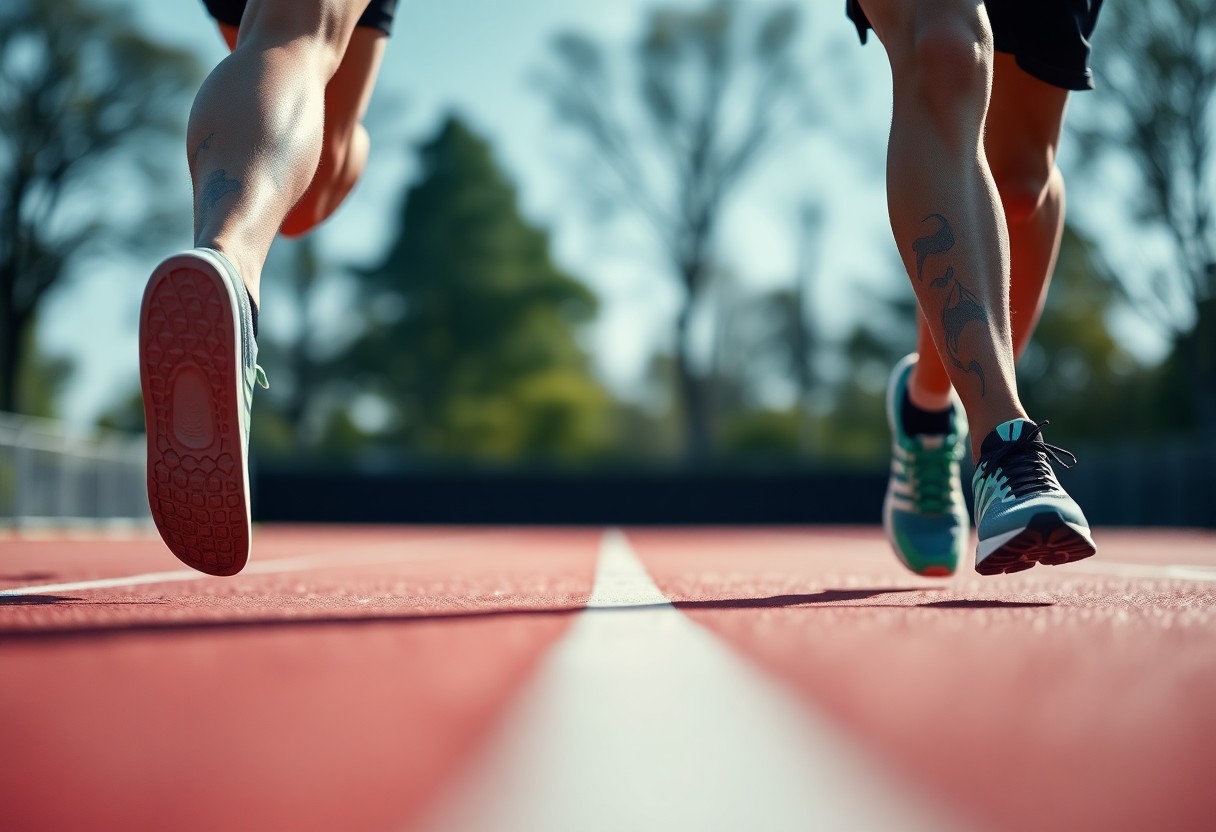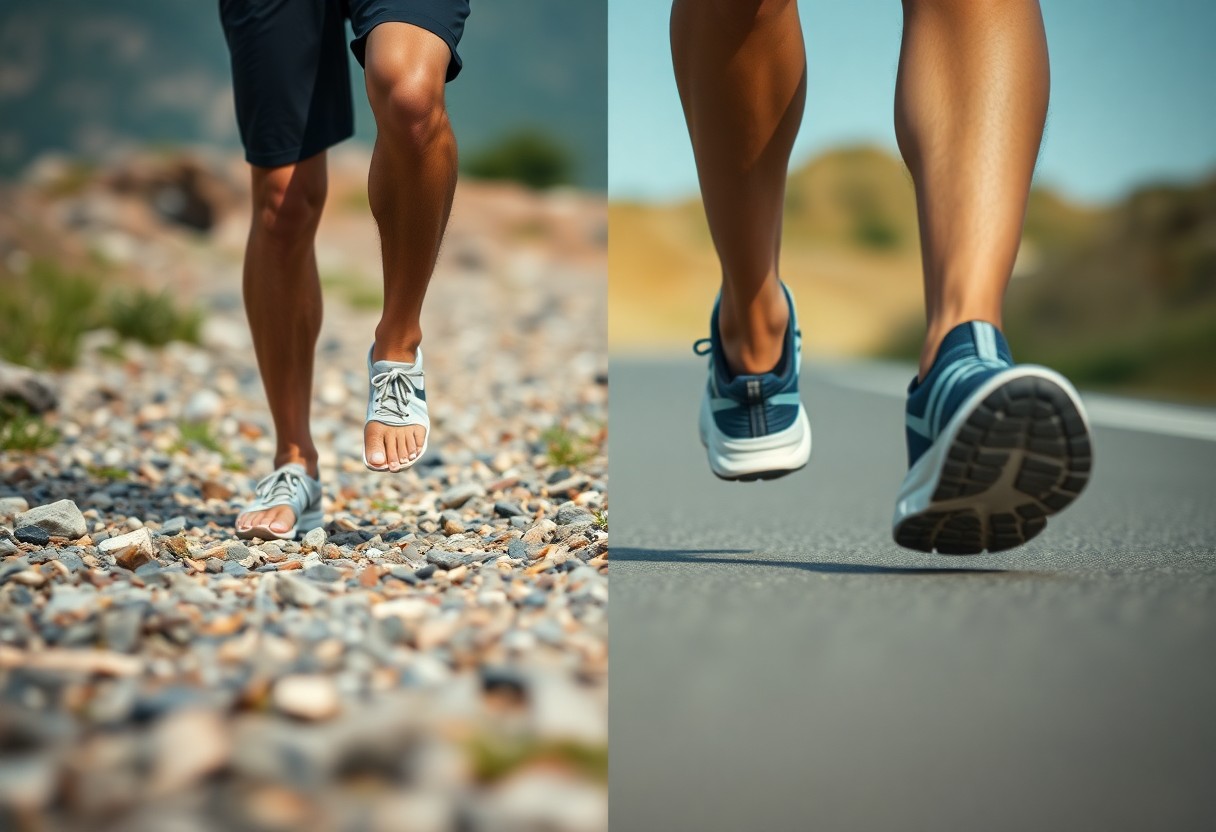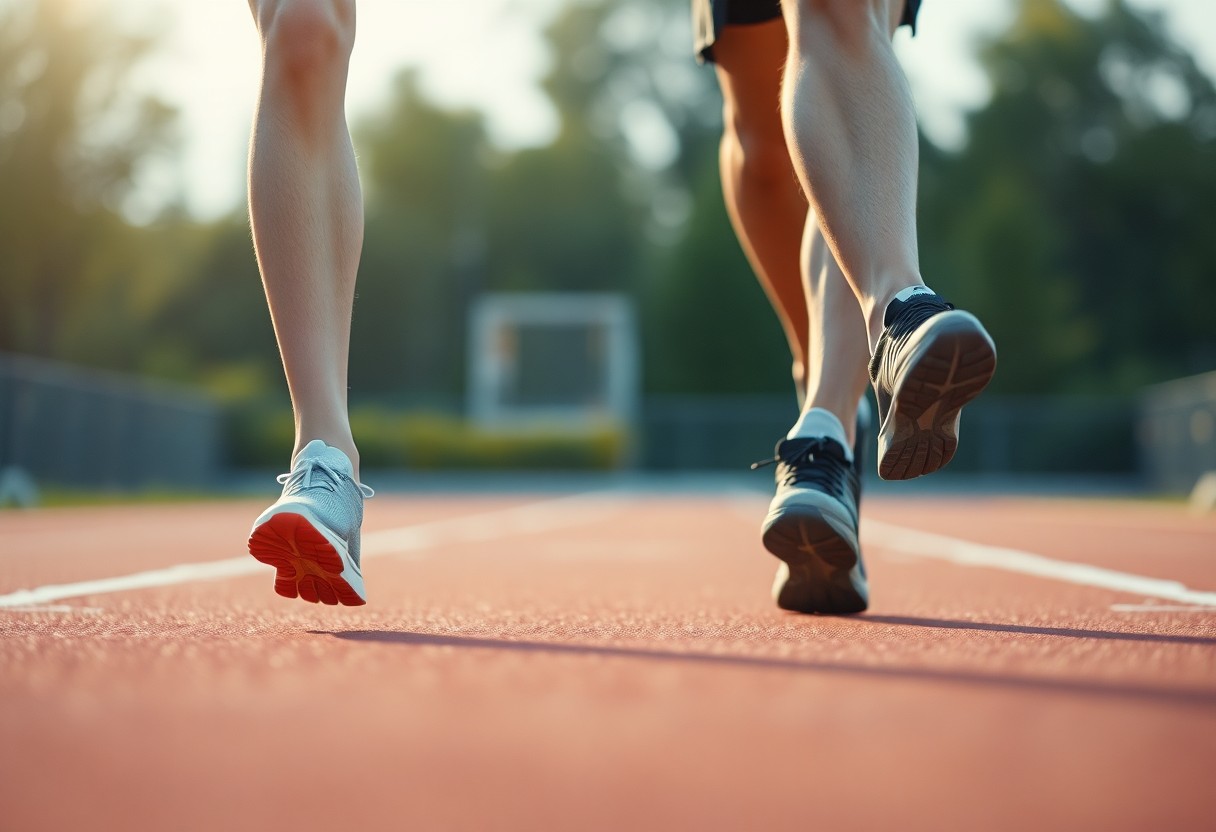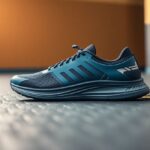
Have you ever reflected on how your choice of running shoes affects your running economy? This thorough examination investigates the distinct impacts of barefoot running shoes in contrast to cushioned alternatives on your athletic performance, efficiency, and overall satisfaction while running. Uncover the various ways each style of footwear affects your biomechanics, potential injury risks, and energy expenditure. This knowledge empowers you to make informed choices that align with your personal running aspirations. Whether you are an experienced marathon runner or a novice, grasping these disparities can significantly enhance both your training efficacy and enjoyment of the sport.

Enhancing Your Understanding of Running Economy Through Biomechanical Insights
To truly grasp the concept of running economy, one must dive into the biomechanical principles that dictate how efficiently your body uses oxygen while running. Essential elements such as muscle engagement, stride efficiency, and the mechanics of your movements are pivotal in determining your performance outcome. By analysing aspects like footstrike patterns, flexion angles, and vertical oscillation, you can gain valuable insights into how barefoot shoes might improve or hinder your running economy when compared to traditional cushioned shoes. These insights not only impact your speed and endurance but also have long-term implications for your overall performance in the sport.
Unveiling Oxygen Consumption Rates: Findings from Extensive Meta-Analysis
A comprehensive meta-analysis of various studies highlights that runners opting for barefoot shoes generally demonstrate lower oxygen consumption rates than those wearing cushioned footwear. This intriguing trend suggests that minimalist footwear encourages a more efficient running style, enabling you to sustain a quicker pace while expending less energy. Such efficiency is particularly advantageous during long-distance races, where conserving energy is crucial for peak performance.
Maximising Ground Contact Time: How Foot Strike Patterns Affect Running Efficiency
Your ground contact time can vary significantly based on your foot strike pattern, directly impacting your overall running efficiency. Runners who utilise a forefoot or midfoot strike typically experience shorter ground contact durations, which enhances propulsion and reduces energy loss. Conversely, those employing a rearfoot strike may face prolonged ground contact times, leading to increased energy expenditure. Transitioning to barefoot shoes often encourages a more natural foot strike, potentially further enhancing your running economy.
Research indicates that elite runners usually achieve an average ground contact time ranging from 185 to 220 milliseconds, facilitating a swift transition to the next stride and contributing to a more efficient running rhythm. As you shift towards barefoot or minimalist footwear, you may notice that adjustments in your foot strike promote shorter ground contact durations, ultimately boosting your propulsion. This transformation not only increases your speed but could also mitigate the risk of injuries. Therefore, comprehending your ground contact time and foot strike pattern can empower you to make well-informed footwear selections that optimise your running performance.

Injury Prevention Strategies: Valuable Insights from Longitudinal Research Studies
Long-term studies investigating running injuries provide critical insights into how different footwear types impact your long-term health. By understanding the connection between footwear choices and injury rates, runners can make educated decisions that enhance performance while reducing risks. These comprehensive studies monitor injury occurrences over extended timeframes and analyse specific variables such as biomechanics, gait adaptability, and muscle strength, thus contributing to a holistic view of effective injury prevention strategies.
Examining Tibial Stress Fracture Rates: Insights from a Rigorous Two-Year Follow-Up Study (Hollander et al. 2021)
The research conducted by Hollander et al. (2021) revealed that runners using barefoot shoes exhibited a significantly lower incidence of tibial stress fractures compared to those in cushioned footwear. Over a two-year observational period, participants in the barefoot cohort reported a remarkable 30% reduction in fractures, underscoring the potential advantages of adopting a minimalist approach to running footwear. This finding suggests a possible link between enhanced proprioception and a lower risk of injury, which is crucial for runners aiming to maintain their health.
Understanding Patellofemoral Joint Loading: Long-Term Implications for Knee Health
Monitoring patellofemoral joint loading during running activities indicates that users of barefoot shoes often experience alterations in loading patterns, potentially helping to lower the risk of developing chronic knee issues. The lack of excessive cushioning fosters a more natural foot strike, thereby reducing impact forces on your joints over time. Researchers have observed improvements in biomechanics among barefoot runners, indicating a protective effect against long-term injuries.
Investigating how shoe choice affects patellofemoral joint loading provides essential insights regarding long-term implications for knee health. By selecting barefoot shoes, you may facilitate a more effective distribution of forces throughout each stride, resulting in lower peak loads on your patellofemoral joint. One notable study highlighted that runners who transitioned to barefoot shoes significantly reduced their knee joint loading, thereby decreasing wear and tear on cartilage and ligaments. This adaptive mechanism can be vital in preventing conditions like patellofemoral pain syndrome, which frequently affects runners reliant on cushioned footwear. Ultimately, the type of running shoes you choose can profoundly influence your joint health and your overall injury prevention strategy.
Innovative Footwear Technology: Transformations Enhancing Your Running Experience
Recent advancements in footwear technology are markedly transforming the running experience by improving both performance and comfort. Cutting-edge designs incorporate state-of-the-art materials and features tailored specifically to meet the diverse needs of individual runners. From sophisticated cushioning systems to adaptable fitting technologies, the modern landscape of running shoes offers a plethora of options that can optimise your running economy while minimising injury risks. This evolution reflects not only a greater understanding of biomechanics but also addresses the preferences and requirements of various running communities.
Utilising Pressure Sensor Mapping: Insights from the Latest Xero Shoes Models
Employing pressure sensor mapping technologies, the latest Xero Shoes models provide significant insights into foot dynamics. This innovative methodology assesses how pressure is distributed during running, enabling you to make informed footwear selections based on your unique gait characteristics. By identifying pressure hotspots and optimising designs accordingly, Xero Shoes enhance your stability and overall performance across various terrains, undoubtedly refining your running economy.
The Advantages of Moisture-Wicking Materials: Essential Enhancements for Marathon Conditions
Moisture-wicking materials integrated into modern footwear are transformative for distance runners, particularly during marathons. These advanced fabrics effectively draw sweat away from your skin, ensuring your feet remain dry and comfortable over long distances. Enhanced breathability helps prevent overheating, while antimicrobial properties combat odour, allowing you to feel fresh even amidst the challenges of competition.
During marathons, where you may be on your feet for hours, having shoes equipped with moisture-wicking features can significantly influence your performance. Technologies like *Dri-FIT* or *CoolMax* facilitate rapid evaporation of sweat, preventing blister formation and reducing the risk of your foot slipping inside the shoe, ultimately enhancing your stability and comfort. With these innovations, you can concentrate on achieving your best performance rather than battling discomfort. In extreme weather conditions, selecting footwear with appropriate moisture-wicking characteristics is not merely a preference but an essential aspect of performance.

Essential Recommendations for Runners: Selecting Optimal Footwear for Enhanced Performance
Choosing the right footwear can significantly impact your running performance and overall experience. Key considerations such as your running style, usage frequency, and personal comfort are crucial in making the best decision. Whether you prefer barefoot shoes for a more natural feel or cushioned options for added support, prioritising how the shoe aligns with your specific requirements is essential. Engaging in trial runs with various styles can assist you in discovering what works best for your unique running profile.
Assessing Your Personal Running Style: Fundamental Factors for Effective Shoe Selection
Your running style plays a crucial role in determining the type of footwear that will best suit your needs. If you are a forefoot striker, lightweight barefoot shoes may provide the responsiveness and feedback you require. Conversely, heel strikers typically gain from additional cushioning to absorb impact. Observing your gait and considering key factors such as speed, distance, and terrain will empower you to align your shoe choice with your unique biomechanics effectively.
Terrain and Conditions: Their Influence on Footwear Performance
The terrain on which you run significantly affects shoe performance, impacting traction, stability, and comfort during your runs. Different surfaces such as trails, roads, and tracks necessitate specific shoe features; for instance, trail shoes usually have deeper treads for better grip, while road shoes focus on cushioning for hard surfaces. Tailoring your footwear to match the terrain not only enhances performance but also reduces the likelihood of injury.
Your footwear selection also interacts with specific environmental factors, including ground softness, inclines, and weather conditions. Wet or loose surfaces require shoes with superior grip, while hard and flat terrains may demand additional cushioning. Furthermore, if you frequently run in diverse conditions, having multiple pairs designed for different environments will help you maintain optimal performance and comfort. Investing in shoes that offer versatile features adaptable to a variety of terrains will empower you to tackle any running challenge confidently.
Emerging Perspectives: The Future of Running Footwear Choices
Adopting Minimalism in Running Footwear Selections
As the running community increasingly gravitates towards minimalist designs, you may find yourself attracted to the numerous benefits that barefoot shoes provide, such as enhanced proprioception and natural movement. This trend is supported by studies indicating that runners can achieve greater efficiency and lower injury rates when transitioning appropriately to less cushioned footwear. The market, brimming with innovative options, suggests a future where your selections are shaped not only by performance metrics but also by a commitment to healthier, more sustainable practices. Striking a balance between cushioning and responsiveness will ultimately influence how you approach your next running endeavour.
Your Queries Addressed: Frequently Asked Questions About Running Footwear
Q: What is the aim of comparing barefoot shoes with cushioned footwear concerning running economy?
A: The goal of this comparative analysis is to assess how different types of footwear—specifically, barefoot shoes and cushioned running shoes—affect running economy, which refers to the energy required for a specific running speed. By examining variables such as oxygen consumption, biomechanics, and foot strike patterns, researchers aim to determine which shoe type may enhance efficiency and performance for various categories of runners. Insights from this analysis can guide runners in selecting suitable footwear based on their running style, distance, and personal preferences.
Q: What key factors influence running economy when comparing barefoot shoes to cushioned options?
A: Several crucial factors affect running economy in the context of barefoot shoes versus cushioned alternatives. Firstly, the weight and flexibility of the shoe can greatly influence how much energy is expended with each stride. Barefoot shoes typically utilise minimal materials, promoting a more natural foot movement. Furthermore, the impact on the surface and the stability offered by cushioning can alter biomechanics, potentially affecting energy return and muscle engagement during runs. Lastly, individual characteristics such as gait, foot shape, and running experience are significant in determining which shoe type fosters improved running economy.
Q: Are there specific populations or scenarios where barefoot shoes may outperform cushioned footwear?
A: Indeed, certain groups, such as experienced runners or those with a natural forefoot strike, may find that barefoot shoes offer advantages, as these designs can enhance running mechanics and overall biomechanics. Moreover, while training on diverse terrains or during shorter distances, barefoot shoes might improve proprioception and agility. However, it is essential to recognise that transitioning to barefoot shoes should be done gradually to avoid injury. Newer runners or those engaging in higher-impact activities might find cushioned shoes more beneficial for reducing impact stress and providing additional support during their runs.
The Article Comparative Analysis of Running Economy: Barefoot Shoes vs Cushioned Counterparts appeared first on My Shoes Finder
The Article Running Economy: Barefoot Shoes vs. Cushioned Footwear Analysis Was Found On https://limitsofstrategy.com
The Article Barefoot Shoes vs. Cushioned Footwear: Running Economy Insights found first on https://electroquench.com







